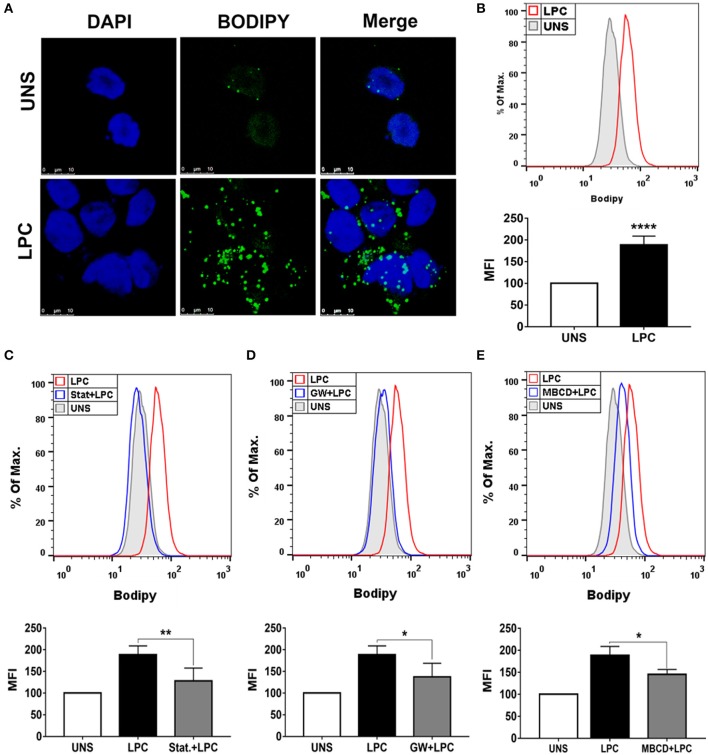Figure 1.
Lysophosphatidylcholine (LPC) induces foam cell formation in human monocytes through mechanisms dependent on HMG-CoA reductase, PPAR-γ, and lipid rafts. (A) Human monocytes were stimulated with 1 μg/ml of LPC, and after 24 h, lipid droplets were stained with the fluorescent probe BODIPY (green), and the nucleus was labeled with DAPI (blue). Images were taken by confocal microscopy. Scale bar, 25 μm. (B) Human monocytes were pretreated with (C) HMG-CoA reductase inhibitor (statin—Stat.), (D) antagonist of PPAR-γ [GW9662 (GW)], and (E) destabilizer of lipid rafts [methyl-β-cyclodextrin (MBCD)] for 1 h and stimulated with 1 μg/ml of LPC for 24 h. Lipid droplets were stained with BODIPY and analyzed by flow cytometry. Histograms are representatives of three independent experiments. Each bar graphic represents the mean fluorescence intensity (MFI), and bars show significant differences and represent the 95% confidence interval (*p < 0.05, **p < 0.01, and ****p < 0.0001) of the cells stimulated with LPC or UNS (unstimulated cells).

